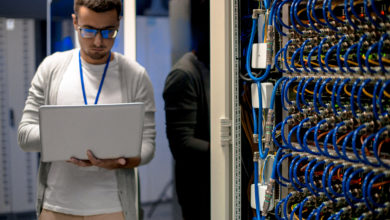Nord Stream 1 Gas Pipeline From Russia to Europe Restarts

BERLIN — Natural gas started flowing through a major pipeline from Russia to Europe on Thursday after a 10-day shutdown for maintenance, the operator said.
But the gas flow was expected to fall well short of full capacity and the outlook was uncertain — which leaves Europe still facing the prospect of a hard winter.
For annual maintenance, the Nord Stream 1 Nord Stream 1 pipe from Germany to the Baltic Sea was closed on July 11. Amid growing tensions over Russia’s war in Ukraine, German officials had feared that the pipeline—the country’s main source of Russian gas, which recently has accounted for around a third of Germany’s gas supplies—might not reopen at all.
Nord Stream AG, operator of the Gas Flow Network said Thursday morning that gas began flowing again. Their network data revealed gas starting to arrive shortly after the maintenance was scheduled for 6 a.m.
Deliveries were expected to fall far below the pipeline’s full capacity, as they did for weeks before the maintenance break.
The head of Germany’s network regulator, Klaus Mueller, said Russia’s Gazprom had notified deliveries Thursday of only about 30% of the pipeline’s capacity. Later, he tweeted that the actual delivery was higher than that and that it could exceed the pre-maintenance level at around 40%.
That wouldn’t be enough to resolve Europe’s energy crisis. “The political uncertainty and the 60% reduction from mid-June unfortunately remain,” Mueller wrote.
When Gazprom reduced the flow last month, it cited alleged technical problems involving equipment that partner Siemens Energy sent to Canada for overhaul and couldn’t be returned because of sanctions imposed over Russia’s invasion of Ukraine.
Continue reading: Where Russia’s War in Ukraine Stands—And What Could Happen Next
This turbine, which powers the compressor station at Russia’s end of the pipeline, was approved by the Canadian government to be shipped to Germany earlier in the month.
The German government has rejected Gazprom’s technical explanation for the gas reduction, charging repeatedly that it was only a pretext for a political decision to sow uncertainty and further push up energy prices. It has said the turbine was a replacement that was only supposed to be installed in September, but that it’s doing everything to deprive Russia of the pretext to reduce supplies.
Russian President Vladimir Putin said Tuesday that Gazprom still hadn’t received the relevant documents for the turbine’s return, and on Wednesday questioned the quality of the repair work. Putin said that Gazprom was to shut another turbine for repairs in late July, and if the one that was sent to Canada wasn’t returned by then the flow of gas would decline even further.
The head of the European Union’s executive Commission, Ursula von der Leyen, said on Wednesday that the turbine was “in transit” and there was “no pretext not to deliver” gas.
As the bloc prepares for an eventual Russian total cutoff, the Commission suggested that members cut their gas consumption by 15% in the next few months.
Germany and Europe are working together to ensure that gas storage is available in the winter, and lessen their dependency on Russian energy imports. Germany has Europe’s biggest economy; gas is important to power its industries, provide heating and, to some extent, generate electricity.
Last month, the government activated the second phase of Germany’s three-stage emergency plan for natural gas supplies, warning that Europe’s biggest economy faced a “crisis” and winter storage targets were at risk. As of Wednesday, Germany’s gas storage was 65.1% full.
German authorities have given permission for utilities to start 10 coal-fired power plant and six oil-fueled plants in an effort to compensate for the deficits. The remaining 11 coal-fired plants that were scheduled to close in November are allowed to continue operating.
Here are more must-read stories from TIME




